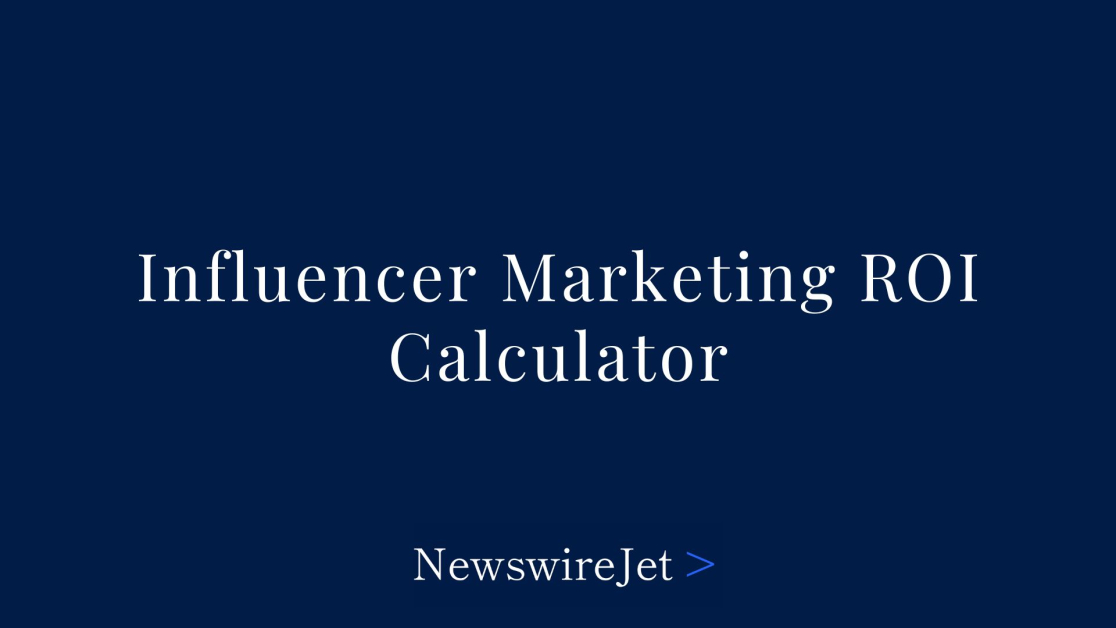Influencer Marketing ROI Calculator
Calculate the return on investment for your influencer marketing campaigns
Campaign Details
Performance Metrics
Revenue Details
Cost Summary
Total Campaign Cost:
$8,000.00
Cost Per Mille (CPM):
$80.00
Cost Per Engagement:
$1.60
Cost Per Click:
$4.00
Cost Per Acquisition:
$80.00
Revenue Summary
Direct Revenue:
$7,500.00
Projected Lifetime Revenue:
$25,000.00
Campaign Insights
Engagement Rate:
5.00%
Click-Through Rate:
2.00%
Conversion Rate:
5.00%
ROI Assessment
Great campaign performance! Your ROI is above average.
How to Use Our Influencer Marketing ROI Calculator
Our Influencer Marketing ROI Calculator is designed to help marketers and businesses measure the effectiveness of their influencer campaigns with precision. Whether you’re planning a new campaign or evaluating past performance, this tool provides valuable insights into your investment returns.
Simple Steps to Calculate Your Influencer Marketing ROI
- Enter Campaign Details
- Name your campaign for reference
- Input all costs associated with your campaign, including influencer fees, content creation expenses, management costs, and any additional expenses
- Be comprehensive to ensure accuracy in your ROI calculations
- Add Performance Metrics
- Input the number of impressions your campaign generated
- Enter engagement figures (likes, comments, shares)
- Record the number of clicks to your website or landing page
- Include the number of conversions (purchases, sign-ups, or other desired actions)
- Specify Revenue Information
- Enter your average order value for immediate sales
- Include customer lifetime value for long-term ROI assessment
- These values help calculate both immediate and projected returns
- Analyze Your Results
- Review your cost metrics (CPM, cost per engagement, CPC, CPA)
- Examine direct and lifetime revenue projections
- Evaluate both immediate ROI and lifetime ROI percentages
- Read the campaign assessment for strategic recommendations
Understanding Your Results
The calculator provides several key metrics to help you evaluate campaign performance:
- Cost Metrics: Understand exactly how much you’re spending per impression, engagement, click, and acquisition
- Revenue Projections: See both immediate returns and potential lifetime value from your campaign
- ROI Percentages: Visual indicators show if your campaign is profitable (green) or losing money (red)
- Performance Rates: Engagement rate, click-through rate, and conversion rate help you identify strengths and weaknesses
Making Data-Driven Decisions
Use the insights from our calculator to:
- Compare the performance of different influencers
- Identify which types of campaigns deliver the best ROI
- Adjust your strategy based on concrete performance data
- Make informed decisions about future influencer marketing investments
- Demonstrate campaign value to stakeholders with clear metrics
Our calculator eliminates guesswork from your influencer marketing strategy, helping you maximize returns and optimize future campaigns with confidence.
Why Measuring Influencer Marketing ROI Matters
Nowadays, influencer marketing has evolved from an experimental channel to a cornerstone of many brands’ marketing strategies. According to recent industry reports, businesses are projected to spend over $24 billion on influencer marketing in 2025.
Yet despite this significant investment, plenty of marketers report struggling to accurately measure their influencer marketing ROI.
The ability to calculate and track ROI isn’t just about justifying your marketing budget—it’s about strategic optimization. When you can precisely measure the return on your influencer partnerships, you can:
- Validate marketing spend to stakeholders and executives with concrete data
- Identify your highest-performing influencers to double down on successful relationships
- Recognize underperforming campaigns early and make necessary adjustments
- Compare influencer marketing against other channels in your marketing mix
- Refine your targeting to focus on audiences that generate the highest returns
- Optimize content types that drive the most engagement and conversions
Without proper ROI measurement, you’re essentially operating on assumptions rather than insights. Our calculator provides the framework to transform influencer marketing from a cost center to a revenue-generating engine with measurable impact.
Key Metrics to Track in Influencer Campaigns
Understanding the full spectrum of metrics in your influencer campaigns is essential for accurate ROI calculation. Here’s a deeper look at each key metric and why it matters:
Impressions: Beyond Vanity Metrics
Impressions indicate how many times your content was displayed, regardless of engagement. While often labeled a “vanity metric,” impressions serve as:
- A baseline for calculating engagement rates
- An indicator of potential brand awareness
- A measure of content reach and algorithm performance
For brand awareness campaigns, impressions may be your primary KPI, whereas conversion-focused campaigns should treat impressions as contextual data rather than success indicators.
Engagement: Quality Over Quantity
Not all engagement is created equal. When tracking likes, comments, shares, and saves:
- Comments typically indicate higher audience investment than likes
- Shares demonstrate content compelling enough for users to associate with personally
- Saves suggest intent to return to the content, showing strong interest
Track engagement ratios alongside raw numbers—a micro-influencer with 10,000 followers and 1,000 engagements (10% rate) may deliver better ROI than a macro-influencer with 1 million followers and 50,000 engagements (5% rate).
Clicks: The Bridge to Conversion
Clicks represent audience members taking action beyond the platform where they encountered your influencer content. To maximize click value:
- Use unique tracking links for each influencer
- Implement UTM parameters to distinguish between campaigns
- Consider the user experience after the click—optimized landing pages increase conversion probability
A high impression-to-click ratio with low conversions often indicates a disconnect between influencer content and your landing page experience.
Conversions: The Ultimate Goal
Conversions transform interested viewers into valuable customers. Depending on your business model, these might be:
- Direct purchases
- Email sign-ups
- Free trial activations
- App downloads
- Appointment bookings
Implement proper attribution models to capture conversions that happen days or weeks after initial exposure to influencer content.
Average Order Value (AOV) vs. Customer Lifetime Value (CLV)
Understanding both immediate and long-term customer value provides a complete picture of campaign performance:
- AOV shows the immediate return from a conversion
- CLV captures the total value a customer brings over their relationship with your brand
For subscription businesses or companies with high repeat purchase rates, CLV-based ROI calculations often justify higher influencer investments than AOV-based calculations alone.
Common Challenges in Calculating Influencer ROI
Even with the right tools, measuring influencer marketing ROI presents unique obstacles. Acknowledging these challenges helps develop more accurate measurement strategies:
Attribution Complexity
The customer journey rarely follows a linear path from influencer content directly to purchase. Challenges include:
- Multiple touchpoints across different marketing channels
- Platform limitations for direct tracking (particularly on TikTok and Instagram)
- Cross-device tracking issues when users view content on mobile but purchase on desktop
Solution: Implement both first-click and last-click attribution models, and consider employing post-purchase surveys asking “How did you hear about us?”
Brand Awareness Valuation
How do you assign monetary value to increased brand awareness? This intangible benefit often appears in:
- Increased branded search volume
- Higher engagement on owned social channels
- Improved sentiment in brand mentions
Solution: Establish baseline measurements before campaigns and track incremental changes, or compare against industry-standard CPM rates for awareness advertising.
Delayed Conversion Windows
Many consumers discover products through influencers but purchase weeks or months later. This delayed behavior can lead to:
- Underreporting of campaign effectiveness
- Difficulty connecting specific influencers to eventual sales
- Challenges in campaign performance comparison
Solution: Extend attribution windows to at least 30-90 days and analyze first-touch attribution data alongside last-touch.
User-Generated Content Value
When influencer partnerships inspire organic content creation from customers, this creates ongoing value difficult to quantify in ROI calculations.
Solution: Track hashtag usage, brand mentions, and product tags that occur organically after influencer campaigns. Assign a production value equivalent to this content.
Offline Impact Measurement
For businesses with physical locations, influencer content often drives in-store visits and purchases that digital tracking misses.
Solution: Use unique discount codes, create influencer-specific landing pages with in-store redemption offers, or implement “how did you hear about us” questions at checkout.
Tips for Improving Your Influencer Marketing ROI
Enhancing your influencer marketing returns requires both strategic planning and tactical execution. Here are proven approaches to maximize your ROI:
Strategic Influencer Selection
The foundation of strong ROI begins with choosing the right partners:
- Prioritize relevance over reach: An influencer with 20,000 highly engaged followers in your niche will typically outperform a general influencer with 200,000 followers
- Analyze engagement quality: Look beyond engagement rates to assess comment sentiment and audience interactions
- Evaluate past brand partnerships: How authentic were the influencer’s previous sponsored posts?
- Request audience demographics: Ensure their followers match your target customer profile
- Check for fake followers: Use auditing tools to identify influencers with artificially inflated follower counts
Performance-Based Compensation Structures
Align payment models with business objectives:
- Affiliate arrangements: Pay commission on actual sales
- Hybrid models: Combine flat fees with performance bonuses
- Tiered compensation: Increase payment as certain KPI thresholds are reached
- Long-term contracts: Negotiate better rates for ongoing partnerships versus one-offs
Content Optimization for Conversion
Some content formats consistently drive higher ROI:
- Tutorial/how-to content: Demonstrates product value in context
- Authentic testimonials: Focuses on specific, relatable benefits
- Before/after demonstrations: Provides visual proof of effectiveness
- Limited-time offers: Creates urgency with exclusive discount codes
- Storytelling formats: Builds emotional connection to products
Content Repurposing Strategy
Maximize the value of influencer content through repurposing:
- Paid social campaigns: Turn high-performing influencer content into ads
- Email marketing: Feature influencer testimonials in customer communications
- Website social proof: Display influencer content on product pages
- Sales materials: Include influencer results in B2B presentations
- Retail displays: Use influencer content in physical store environments
Long-Term Relationship Building
Sustainable ROI often comes from extended partnerships:
- Ambassador programs: Convert successful one-off influencers to ongoing ambassadors
- Co-creation opportunities: Involve influencers in product development
- Exclusivity arrangements: Secure category exclusivity with high-performing partners
- Incremental investment: Start small and increase budgets with proven performers
- Community building: Connect your influencers with each other to strengthen brand advocacy
Frequently Asked Questions
How much should I pay an influencer?
Micro-influencers (10K-50K followers) typically charge $200-$1,000 per post, while macro-influencers (100K-1M) range from $1,000-$10,000+. Base your budget on your maximum allowable cost per acquisition rather than follower count alone.
Can I measure influencer ROI without access to sales data?
Yes. Track proxy metrics like lead generation cost, website traffic value, or equivalent media value. For awareness campaigns, compare costs to reach the same audience through traditional advertising.
How many influencers should I work with per campaign?
Start with 3-5 influencers to gather performance data without overextending resources. Scale successful partnerships while gradually testing new creators. Quality consistently outperforms quantity for long-term ROI.





